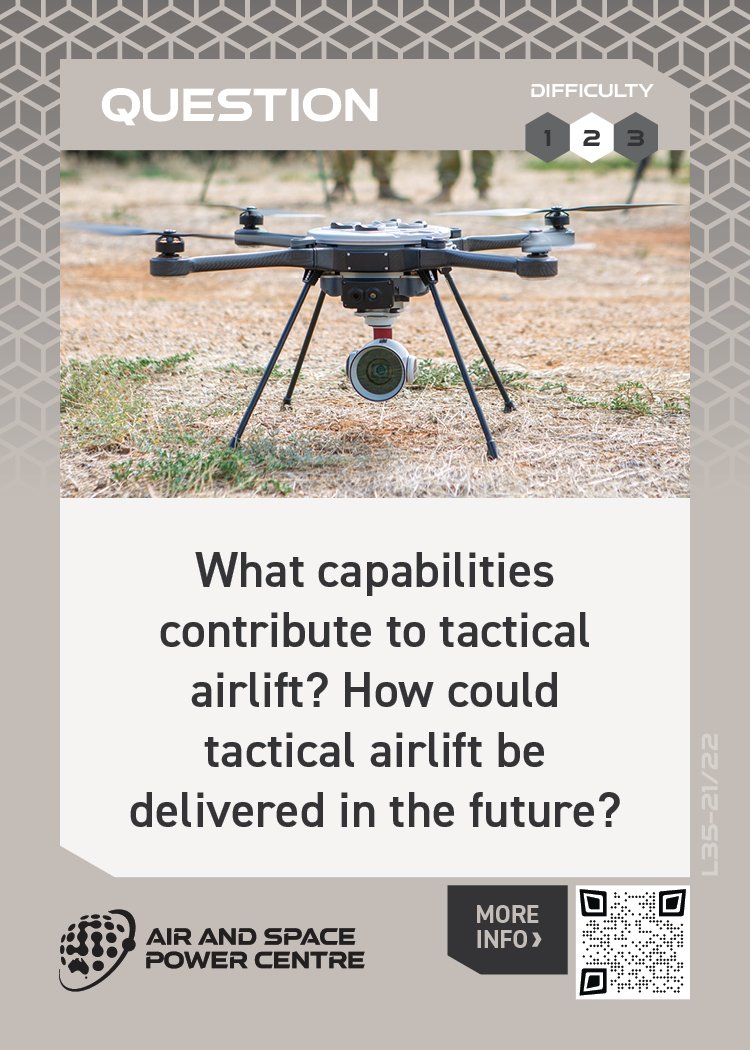
Overview
What capabilities contribute to tactical airlift? How could tactical airlift be delivered in the future?
Air operations always involve risk.
While traditional airlift has served the military well, they face significant vulnerabilities, particularly in the changing nature of Operational and contested environments.
With the shifting nature of conflict, the potential for escalation and risk, and the ethical and societal considerations, the evolution of autonomous systems may provide militaries the ability to address future 'risk to mission' and 'risk to force', with the additional benefits of increased efficiency, enhanced safety, reduced operational costs and swarm technology (that provides the ability to rapidly scale airlift capabilities).
While the potential of autonomous systems exists, there are challenges to overcome integrating them into military operations. Issues such as cybersecurity, air traffic management, and regulatory approval is required to ensure the safe and effective deployment of these systems.
These challenges are not inconsequential, as such the future of tactical airlift likely involves a mix of traditional and novel/hybrid approaches, with an emphasis on lift capabilities and autonomous systems that maximises achieving mission outcomes.